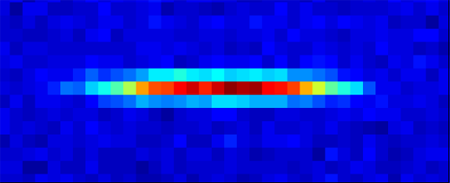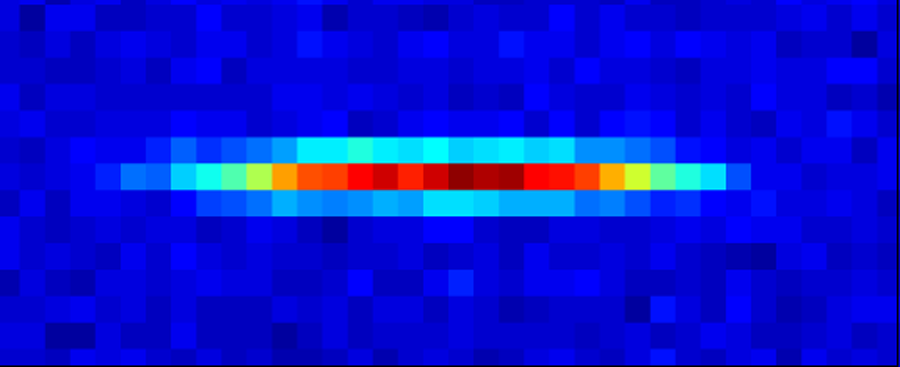Detecting Quantum Motion in a Gas
The quantum world hums with activity even at absolute zero temperature, thanks to the so-called zero-point motion. But this purely quantum effect is hard to see directly. In Physical Review Letters, a physicist analyzes pictures of a gas cloud a few billionths of a degree above absolute zero to reveal sound waves that result from this quantum motion.
Quantum mechanics stipulates that an oscillator, such as a pendulum or an electronic circuit, cannot have zero energy—it always retains some “zero-point” motion, even at zero temperature. Similarly, the strength of electromagnetic fields in empty space isn’t zero but continually fluctuates. The average effect of these fluctuations leads to important phenomena like the spontaneous emission of light by atoms and the Casimir force between almost-touching objects. What has been missing so far is “direct observation of the fluctuations themselves,” says Julien Armijo of the Institute of Optics in Palaiseau, France.
Working in the lab of Isabelle Bouchoule, also from the Institute of Optics, Armijo looked for the quantum fluctuations resulting from density waves in an atomic gas. He first trapped about a thousand atoms above an “atom chip.” Currents flowing through wires buried in the chip confined the atoms to a long thin region, and radio waves cooled them almost to absolute zero. Armijo then photographed light bouncing off the chip to see how much the cigar-shaped cloud absorbed at different positions. By repeating this preparation hundreds of times, he measured the density fluctuations around the average density. These density fluctuations reflect the presence of random density waves, or phonons, in the cloud.
Measuring the zero-point excitation of these waves is tricky because the gas can’t be cooled all the way to absolute zero. Waves with very long wavelength have such low energies that they are never frozen into their lowest state, so some classical, thermal fluctuations remain in the gas and need to be carefully distinguished from the quantum motion. Even after cooling to 4.7 nanokelvin, Armijo estimates that quantum fluctuations contribute only about 20 percent of the total variation measured within a pixel. Still, the experimental error is smaller than this, and comparing the measurements with a detailed theory showed that the quantum contribution must be included.
Specifically, Armijo examined the fluctuations for increasingly long regions by combining measurements on neighboring pixels and looking for any trend in the data. A theory that includes only classical phonons predicts a clear increase in the atom number fluctuations with increasing length. But the quantum contributions should cancel the classical increase, so that the total fluctuations shouldn’t change. Even if Armijo’s absolute calibration were off, he expected the trend with increasing length would clearly indicate if the quantum fluctuations were present. The measurements showed little change with increasing length, confirming that the quantum fluctuations were contributing as expected.
“Frankly, it’s pretty much expected” that the zero-point fluctuations would be present, says Dimitri Gangardt of the University of Birmingham, England, although he notes that actually measuring them was a major challenge. Still, he says, it is satisfying that the results show “a kind of clear signature of quantum fluctuations, … quite distinguishable from just the thermal fluctuations.”
–Don Monroe
Don Monroe is a freelance science writer in Murray Hill, New Jersey.





